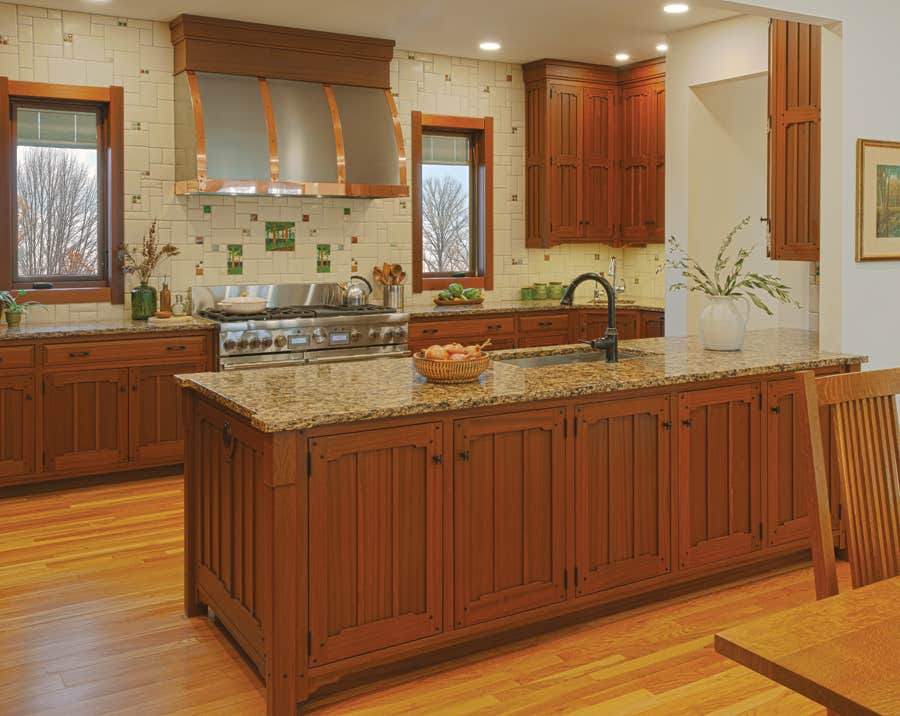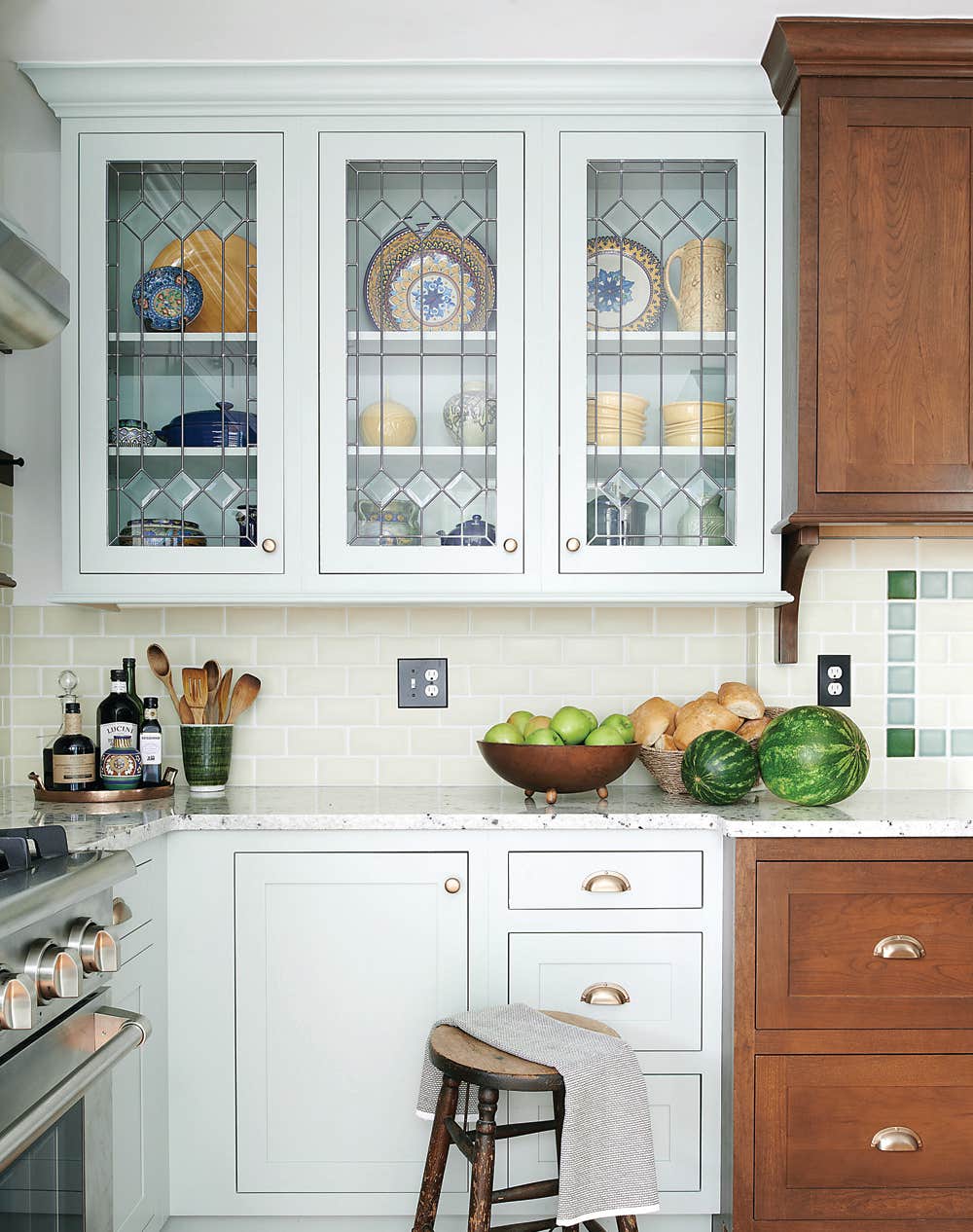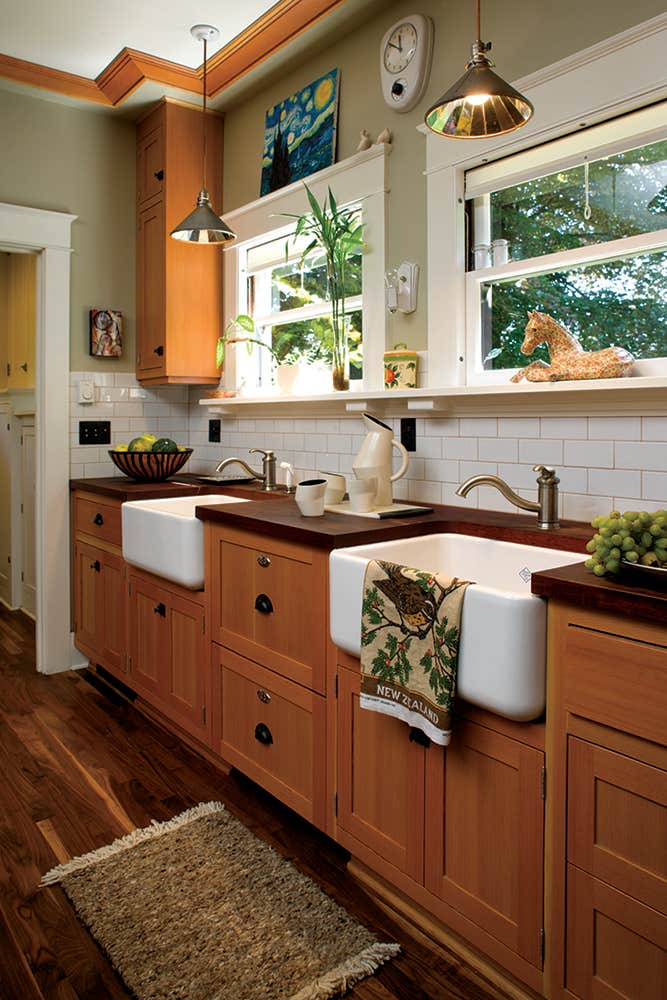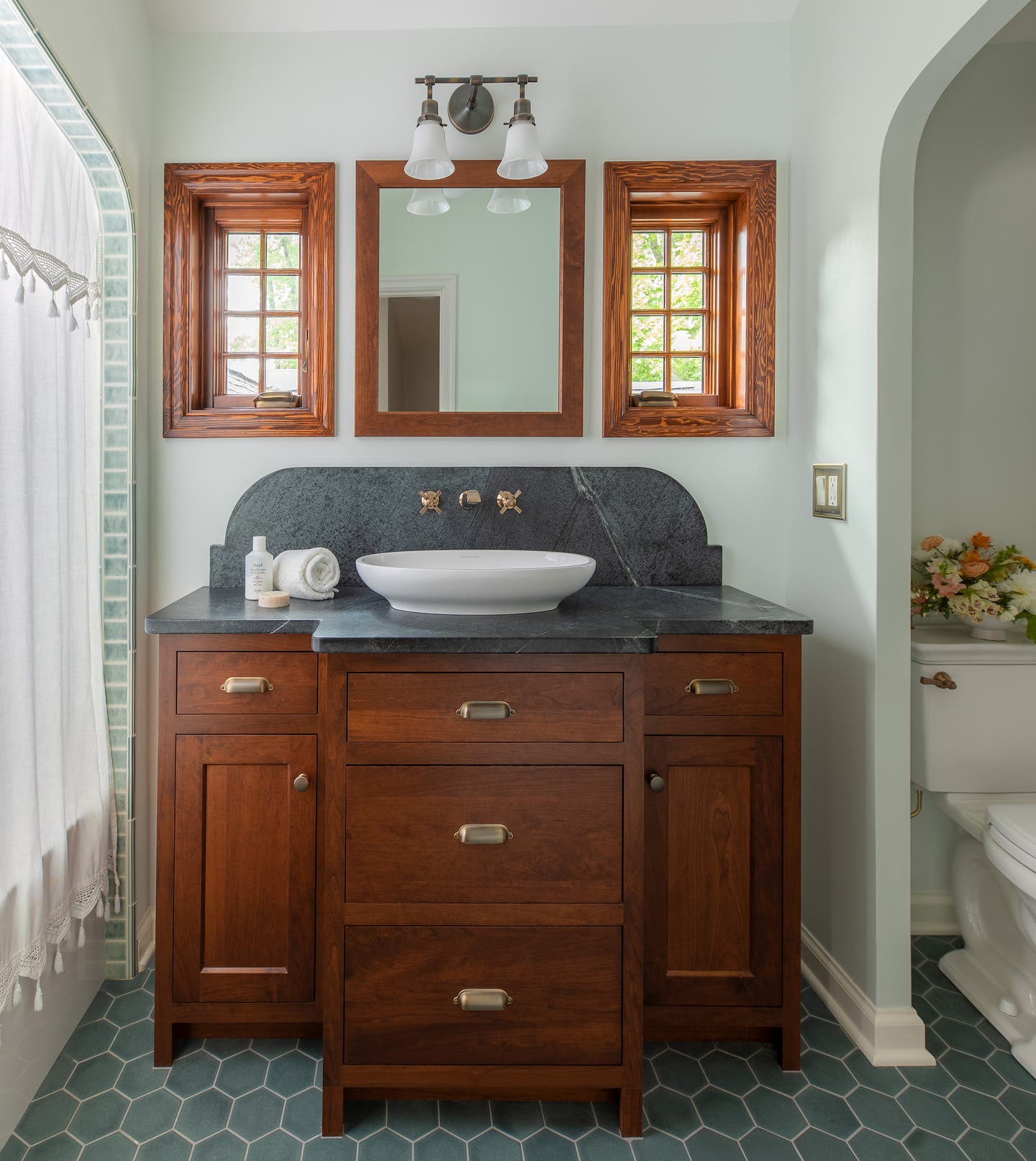Powder Rooms & Half Baths Designed for the Bungalow Era
Today’s half-bath may be utilitarian—set near the laundry or garden and able to handle yard dirt—or it may a jewel box of fancy treatments kept affordable by the room’s diminutive size. It’s a good place to make a decorating statement.
It’s amazing just how tiny a half-bath can be. You may be tempted to create a fine little room with coveted materials and rich color.
The powder room of the 18th century was a discreet closet where one went to powder one’s wig. By Victorian times, “going to the powder room” or taking leave to “powder [my] nose” had become euphemisms for using the toilet and lavatory. The modern powder room is most often a small half-bath, with no tub or shower. It’s often near the entry to be convenient to visitors. The old half baths were barely more than a toilet, small sink, and mirror. Still, in the American Arts & Crafts period of the early 20th century, householders had begun adding more elaborate wall treatments and other upgrades to impress guests.
If you are adding a new half-bath or moving fixtures or doorways, consider the view into the room. The door is usually left open, and no one wants to see the toilet from a public room. Try to make it a pretty vignette: a view toward a decorated or hardwood vanity, wallpaper, a gorgeous mirror. Not the john.
If the powder room opens from a main space, think about sound transfer. Having a small “vestibule” on either side of the door, building a vanity on a wall between the main room and the toilet, even adding extra insulation or a sound barrier in the common wall are good ideas.
Have fun with the mirror, always necessary in a wash-up room. Consider its shape, size, and frame material: anything from wood or metal to tile. Typical hanging height is with its mid-point about 66" from the floor, considered eye level. Furniture makers and decorating suppliers sell many types of mirrors and frames, but for a true period touch consider an antique mirror—or an antique picture frame with a new mirror. Instead of a recessed medicine chest, install shelving between studs in the wall cavity, and hinge the mirror over the opening.
Basic Bath to Jewel Box
Every coveted upgrade costs less in a tiny space! A wood or tile wainscot is traditional; tongue-and-groove beadboard and board-and-batten wood paneling are affordable and familiar. (You can even buy faux beadboard, a paintable, damp-friendly vinyl wallpaper: see grahambrown.com.) Colored tile and Arts & Crafts or Spanish Revival tile designs look rich in half-baths.
In this small but public room, be adventurous with wall treatments. Wallpaper does fine in a powder room. Treatments can be used that are too delicate for a humid full bath. This includes using fabric on the walls, which makes the room intimate and dampens sound.
Full baths demand easy-care, wet-resistant flooring, but a wood floor stands up well in a half-bath. You can get artistic (or serene) effects with stone or tile. The ceiling is another unbroken plane in the room, and one that gets no splash-back, so indulge your desire for a ceiling paper or decorative painting.
Patricia Poore is Editor-in-chief of Old House Journal and Arts & Crafts Homes, as well as editorial director at Active Interest Media’s Home Group, overseeing New Old House, Traditional Building, and special-interest publications.
Poore joined Old House Journal when it was a Brooklyn-brownstoner newsletter in the late 1970s. She became owner and publisher and, except for the years 2002–2013, has been its editor. Poore founded the magazines Old-House Interiors (1995–2013) and Early Homes (2004–2017); their content is now available online and folded into Old-House Journal’s wider coverage. Poore also created GARBAGE magazine (1989–1994), the first unaffiliated environmental consumer magazine.
Poore has participated, hands-on, in several restorations, including her own homes: a 1911 brownstone in Park Slope, Brooklyn, and a 1904 Tudor–Shingle Style house in Gloucester, Massachusetts, where she brought up her boys and their wonderful dogs.








